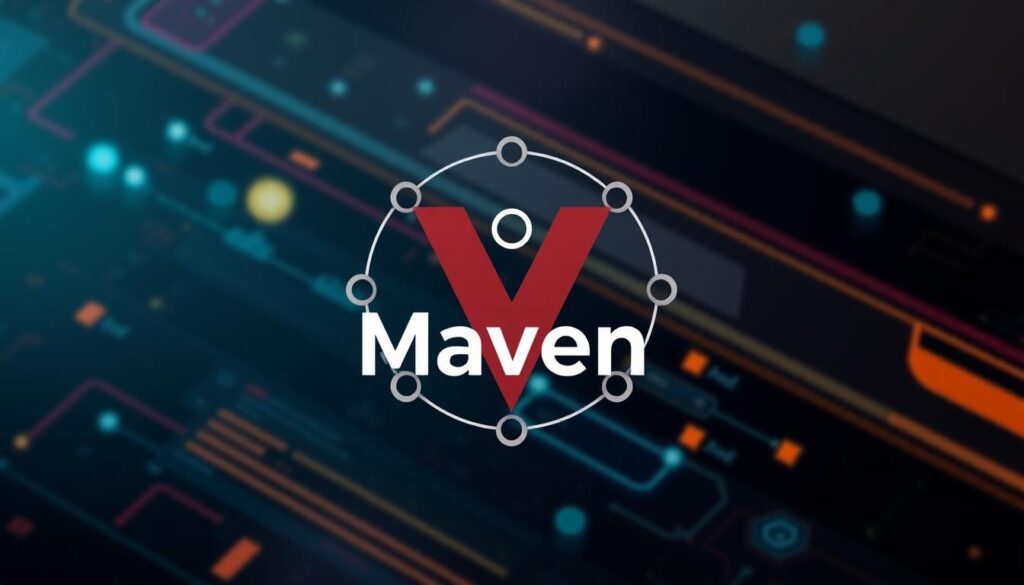FTC disclaimer: This post contains affiliate links and I will be compensated if you make a purchase after clicking on my link.
In the world of software development, being efficient and working together is key. The best DevOps tools are your secret to making things run smoother and faster. This blog will guide you through the top DevOps tools of 2024. They’re here to make your development process better and turn you into a coding master.
Ever wonder what makes top software teams so successful? It’s their use of DevOps practices and the right tools. These tools help manage everything from code to infrastructure. They’re changing how we create, deploy, and keep software up to date. But are you using them to their fullest potential?
Key Takeaways:
- Discover the best DevOps tools for boosting your development process in 2024
- Understand how these tools streamline workflows and accelerate deployments
- Learn about the crucial features and benefits of each top DevOps tool
- Gain insights into how leading organizations leverage these tools for agile development
- Explore the impact of cloud computing and containerization on modern DevOps practices
Why DevOps is Crucial for Modern Software Development
In today’s fast world, DevOps is key to software making. It helps teams make software that is quick, reliable, and can grow. DevOps makes it easier to work together and move to the cloud.
The Need for Speed: Accelerating Software Delivery
DevOps focuses on continuous integration and continuous delivery (CI/CD). It automates the steps from making to deploying software. This makes it faster to get updates and new features to users.
By making the process smoother, DevOps lets teams quickly meet market needs. It helps them keep up with what users want.
Breaking Down Silos: Fostering Collaboration and Visibility
DevOps breaks down old team walls between developers and operations. It makes a team culture where everyone works together. This teamwork improves communication and makes solving problems easier.
Embracing the Cloud-Native Future
DevOps often means using microservices and infrastructure as code (IaC). It helps teams use cloud computing’s benefits like being flexible and cost-effective. It also makes using containerization tools like Docker easier.
DevOps is key in today’s fast software world. It helps teams work faster, better together, and use cloud technology. This way, they can keep up with digital demands and make great software.
| DevOps Benefits | Impact |
|---|---|
| Faster Time-to-Market | Automated CI/CD pipelines speed up making and deploying software. This lets teams quickly meet market and user needs. |
| Improved Reliability | DevOps’ constant testing and checking make software better. It has fewer bugs and works more reliably. |
| Enhanced Collaboration | DevOps removes old team walls. It creates a culture where everyone works together well. |
| Increased Scalability | Using cloud-native tech like microservices and containerization makes scaling easier. This helps teams grow their apps and systems better. |

“DevOps is not a job or a team, it’s a culture of collaboration, communication, and automation that brings development and operations together to deliver software faster and more reliably.”
Unleashing the Power of Version Control with Git
Git is a key tool in software development and DevOps. It’s a powerful version control system. It helps developers work together on codebases.
Git lets developers work offline. They can create and merge branches for new features and bug fixes.
Git tracks code changes well. This helps find out who made changes and why. It’s key for keeping code quality and code security high.
Git changes the game in software development. It makes collaborative coding easier. Teams can work together, merge their work, and solve problems fast.
This is crucial for making high-quality software on time.
| Git Statistics | Value |
|---|---|
| Created by | Linus Torvalds in 2005 |
| GitHub founded | 2008, acquired by Microsoft in 2012 |
| GitHub users worldwide | Millions |
| Git version control system ranking | Widely regarded as one of the most widely used |
| GitHub development community | Largest and most important on the web |
| Popular Git branching strategies | Gitflow, feature branching, trunk-based development, task branching |
In the fast-changing world of software development, Git is a key part. It helps manage code quality and code security better than ever.

Managing Project Dependencies with Maven
Managing project dependencies is key in software development. Maven makes this easier. It’s a tool for Java projects that helps with building, testing, and sharing. This ensures your work is consistent and easy to repeat.
Maven is great at handling dependencies. It uses a central file to manage what your project needs. This saves time and makes sure everything works well together. It helps with software reliability, software maintainability, and software scalability.
Maven also has many plugins to help with different tasks. You can use it for continuous integration and deployment. It makes your work flow better and helps you make high-quality software.
| Feature | Benefit |
|---|---|
| Dependency Management | Automated resolution and download of required libraries and packages, ensuring consistent and reproducible builds. |
| Project Object Model (POM) | Centralized configuration file that serves as the blueprint for Maven’s execution of various tasks. |
| Plugin Ecosystem | Highly extensible with a vast collection of plugins, enabling customization and integration with other tools and processes. |
| Consistent Project Structures | Enforces best practices and standardized project structures, promoting collaboration and maintainability. |
Starting with Maven will make your work easier. It helps with build automation, project management, and continuous integration. This leads to better software reliability, software maintainability, and software scalability.

“Maven has been a game-changer for our Java development team, automating dependencies and build processes to improve efficiency and consistency across our projects.”
Automating CI/CD Pipelines with Jenkins
In the fast-paced world of software development, quick and smooth continuous integration (CI) and continuous delivery (CD) are key. Jenkins is a top choice for making these processes faster. It helps teams get their software out the door quicker.
Streamlining Build, Test, and Deployment Processes
Jenkins makes the software development cycle easier. It automates building, testing, and deploying code. This means teams can get their work out faster and with fewer mistakes.
Flexibility and Extensibility Through Plugins
Jenkins stands out because of its huge plugin library. With over 1,500 plugins, it works with many tools like GitHub and Maven. This lets teams customize their pipelines to fit their needs.
| Key Jenkins CI/CD Features | Benefits |
|---|---|
| Automated Build, Test, and Deployment | Faster time to market, improved code quality, and reduced manual errors |
| Distributed Build Architecture | Optimized performance and scalability for large-scale automation |
| Extensive Plugin Ecosystem | Flexibility to integrate with a wide range of tools and technologies |
| Declarative Pipelines | Improved maintainability and readability of pipeline configurations |
| Robust Security Features | Secure and reliable CI/CD processes with role-based access control |
Using Jenkins, teams can make their software delivery pipelines better. This leads to faster releases, better code, and more efficiency. Jenkins is a key player in modern software development.

Infrastructure as Code with Chef
In today’s fast-paced world, managing infrastructure well is key. Chef, a top automation platform, changes how we manage infrastructure. It makes teams better at scalability and reliability in their systems.
Chef automates server setup, config, and upkeep. It makes sure everything is set up right and stays that way. This cuts down on mistakes and lets teams do more important work.
Achieving Scalability and Reliability
Using Chef makes it easy to grow your infrastructure as you need. It works with a few servers or a big cloud-based setup. Chef keeps your systems running smoothly, even when they get bigger.
Seamless Integration with Cloud Providers and Containers
Today, working with cloud providers and containerization is essential. Chef is great at this, working well with AWS, Azure, and GCP. It also works well with containerization tools like Docker. This makes managing apps and services more efficient.
With infrastructure as code from Chef, teams can do more. They can handle changes in software development better. This makes them more confident and precise in their work.
Orchestrating Infrastructure with Puppet
In today’s IT world, making infrastructure automation key is crucial. Puppet is a top tool for managing complex systems. It helps manage different types of infrastructure easily.
Puppet makes managing servers and cloud instances simple. It works well with on-premises, cloud, and container resources. This makes it vital for streamlining setup, configuration, and keeping systems in line.
Puppet automates infrastructure management. This reduces complexity, cuts down on mistakes, and speeds up software delivery. It offers many features, including:
- Infrastructure Provisioning: Puppet makes setting up new resources easy and consistent.
- Configuration Management: It keeps your systems in the right state, reducing the chance of errors.
- Infrastructure Scaling: Puppet grows with your IT needs, from small to large setups.
- Infrastructure Compliance: It helps keep your systems in line with rules, making audits easier.
Puppet works well with many cloud and container platforms. This makes it a great choice for managing hybrid infrastructure and infrastructure automation.
| Feature | Benefit |
|---|---|
| Infrastructure as Code | Ensures consistency and repeatability in infrastructure provisioning and configuration |
| Scalability | Manages growing IT landscapes, from small deployments to large-scale hybrid infrastructures |
| Compliance | Maintains a consistent, compliant infrastructure, simplifying regulatory requirements |
| Cloud and Container Integration | Enhances versatility and enables orchestration of hybrid infrastructure |
For businesses aiming to speed up software delivery and have a strong infrastructure, Puppet is key. It automates configuration management and infrastructure provisioning. This lets organizations quickly meet changing needs and deliver quality software fast.
Simplifying Automation with Ansible
In the world of DevOps, Ansible is a big deal. It’s a tool for automating and managing systems. It helps teams work better, faster, and safer.
Agentless Architecture and Declarative Language
Ansible doesn’t need special agents on remote systems. This makes it easy to set up and keep running. It uses a clear language, YAML, to tell systems what to do.
Vast Library of Pre-built Modules
Ansible has lots of modules for different tasks. It can handle cloud stuff and software setups. This means users can automate many tasks without writing a lot of code.
| Ansible Use Cases | Adoption Rates |
|---|---|
| Infrastructure Provisioning | 70% |
| Application Deployment | 20% |
| Security Compliance | 10% |
As teams focus on being more efficient and secure, Ansible is key. It helps teams work better, stay safe, and handle big systems.
“Ansible’s agentless architecture and declarative language make it a game-changer for DevOps teams, enabling them to automate complex tasks with ease and speed.”
Containerizing Applications with Docker
In today’s fast-changing world of software, containerization is key. Docker leads this change, making it easy to package apps and their needs into small, easy-to-move containers. This method makes app deployment faster, more portable, and scalable.
Portability and Scalability Across Environments
Docker containers work the same everywhere, from testing to live use. They wrap up an app and what it needs, solving the “it works on my machine” issue. This means apps work well everywhere, making it easy to grow and change them fast.
Accelerating Development Cycles
Docker makes coding faster by giving a standard way to run apps. This lets developers spend more time on coding and less on setup. It also makes it easier to work together, as teams can share and use the same setups.
Docker is a big deal in software development today. It makes apps more portable, scalable, and quick to make. This helps companies keep up with new tech fast, delivering apps that work well and meet today’s needs.
“Containerization with Docker has revolutionized the way we approach application deployment, significantly accelerating our development cycles and enhancing the overall efficiency of our DevOps processes.”
Best DevOps Software: Orchestrating Containers with Kubernetes
In the world of software, Kubernetes is a big deal. It helps manage and automate containerized apps. This is key for modern DevOps.
Managing and Automating Containerized Applications
Kubernetes, or K8s, makes managing apps easier. It lets you deploy and scale apps across different places. This makes deployment smooth and efficient.
Scalability, Self-Healing, and Load Balancing
Kubernetes is great at scaling apps. It makes sure your services can handle more traffic. It also has self-healing features to keep containers running well.
It also balances load well. This means traffic is spread out evenly. This makes your system more reliable and fast.
Using Kubernetes, DevOps teams can manage apps better. They can scale, self-heal, and balance load. This boosts DevOps automation and scalability.
“Kubernetes, developed by Google and now led by the Cloud Native Computing Foundation (CNCF), is designed to support ‘planet-scale’ workloads of billions of containers each week.”
Monitoring and Visualization with Prometheus and Grafana
In the world of DevOps, watching applications and infrastructure closely is key. This helps find problems, get feedback, and make smart choices. Two top tools for this are Prometheus and Grafana.
Prometheus is an open-source tool for watching infrastructure. It’s great at collecting and storing data over time. It works well with Grafana, a popular tool for making data easy to see. Together, they help DevOps teams understand how systems are doing.
Grafana makes it easy to make, change, and share dashboards. These dashboards use Prometheus data. They give a clear view of how well things are working.
- Prometheus can work with other DevOps tools, like Grafana for seeing data and Alertmanager for alerts.
- Grafana’s easy-to-use interface lets users make, change, and share dashboards easily.
- Prometheus and Grafana together offer a strong devops monitoring and devops observability solution.
Using Prometheus and Grafana, DevOps teams can find and fix problems fast. They can also use resources better and make choices based on data. This way, teams can keep up with the fast pace of DevOps.
“Prometheus and Grafana have become essential tools in the DevOps toolbox, providing unparalleled visibility into system performance and helping teams make informed decisions to drive continuous improvement.”
Fostering Communication and Collaboration with Slack
In the world of DevOps, talking and working together is key. Tools like Slack and Microsoft Teams help a lot. They make sharing info, working together, and being open important for DevOps success.
Slack helps break down walls and brings teams together. It’s a cloud-based place for easy talk, from morning meetings to fixing problems. This way, your teams can work well together and quickly adapt.
Slack’s integration with other tools makes things smoother. It helps teams make quick decisions with the right info. This can make teams work better together by up to 25%, a Frost & Sullivan study found.
“Fostering a culture of collaboration and communication is essential for the success of DevOps. Tools like Slack provide the platform to bring teams together, share knowledge, and drive continuous improvement.”
Even with Slack’s benefits, challenges like getting context and doing things on your own still exist. But, by working together, learning, and solving problems without blame, you can use Slack to the fullest. This will help your DevOps journey move faster.
Key Benefits of Leveraging Slack in DevOps
- Improved team communication and information sharing
- Enhanced cross-functional collaboration and workflow automation
- Increased transparency and accountability across the organization
- Faster incident response and more effective problem-solving
- Fostering a DevOps culture of continuous learning and improvement
| Metric | Improvement |
|---|---|
| Team Collaboration | 25% increase |
| Project Completion Rates | 23% increase |
| Employee Engagement | 20% increase |
| Profitability | 21% increase |
Securing Your DevOps Pipeline with Aqua Security
In the DevOps era, security is key, not an afterthought. Automated security testing and scanning are now common. Tools like Aqua Security and Snyk help protect container apps and cloud spaces.
Aqua Security has a wide platform for devsecops and devops security. Its Real-time Threat Detection keeps an eye on apps in DevOps. It helps teams stay safe from threats. Aqua also checks containers and code for vulnerabilities before they’re used.
Compliance is a big deal for Aqua Security. It makes sure security rules are followed in all stages of development. The platform also checks containers for vulnerabilities and protects them at runtime.
- Aqua Security protects serverless functions with Serverless Function Protection. It checks for vulnerabilities and enforces least privilege access.
- The Image Assurance feature scans container images for issues. It keeps deployments safe.
- Aqua’s Secrets Management keeps sensitive data safe. It reduces the risk of data breaches.
- The platform controls traffic between apps with Network Segmentation and Firewall. It stops threats from spreading.
Aqua Security works well with DevOps tools like Azure DevOps and GitLab. It scans container images in CI/CD pipelines. This makes sure security is always checked, helping teams meet container security and infrastructure security needs.
“57 percent of security teams use at least six different tools, according to GitLab’s 2023 Global DevSecOps Report.”
Using Aqua Security, DevOps teams can make their vulnerability scanning and runtime protection better. This makes their devsecops pipeline more secure.
Continuous Learning with Pluralsight and Udemy
As a DevOps pro, you must keep learning to stay ahead. Online learning sites like Pluralsight and Udemy have lots of resources. They help you grow in DevOps training and education.
Pluralsight has over 5,000 courses on DevOps tools and methods. You can get access for about $29 a month or $299 a year (14% off). For more, the yearly premium membership is around $499. It includes interactive courses and quizzes.
Udemy offers a different way to learn. It has over 80,000 courses, including free and discounted ones. This makes Udemy great for those watching their budget but still want to learn.
| Feature | Pluralsight | Udemy |
|---|---|---|
| Course Library | 5,000+ courses | 80,000+ courses |
| Pricing Model | Subscription-based (monthly/yearly) | One-time purchase per course |
| Free Courses | Limited | More options |
| Learning Experiences | Interactive courses, quizzes, assessments, and projects (Premium) | Varied learning experiences based on individual course offerings |
Both Pluralsight and Udemy have many DevOps courses. They cover everything from basics to advanced topics. These platforms help you learn and stay competitive in DevOps.
DevOps is always changing, so you must keep learning. Use Pluralsight and Udemy to improve your skills. This way, you’ll be ready for new trends and be a key player in DevOps.
Agile Project Management with Jira and Trello
DevOps teams use Agile methods for quick changes. Tools like Jira and Trello help manage projects. They offer features for tracking tasks and planning together.
Jira Work Management (JWM) helps teams work together in real-time. Jira Software is for agile teams and has great reporting. Trello is for managing work and team activities.
Jira and Trello can work together. Jira is free for up to 10 users and links with many apps. It gives teams real-time data and insights.
Agile comes from Toyota’s lean manufacturing. It aims to cut waste and increase transparency. Scrum and Kanban are two main frameworks.
Scrum boards help see tasks in a sprint. Trello and Jira have what teams need for agile project management, devops practices, and team collaboration.
Conclusion: Embracing the DevOps Journey
The best DevOps tools are great, but they’re not everything. Think about what you need, your team, and your projects first. Sometimes, you might need more than tools. Getting help from DevOps consulting services can guide you in creating a strategy that fits your needs.
With the right tools and teamwork, you can change how you work and get amazing results. Start your DevOps journey and use the best tools to help you. By adopting DevOps and improving together, you can make your team better. This way, you can create software that meets today’s market needs.
DevOps practices should fit your business, not the other way around. Always check your processes, listen to feedback, and change things as needed. With the right tools and mindset, you can lead in the changing DevOps world.








